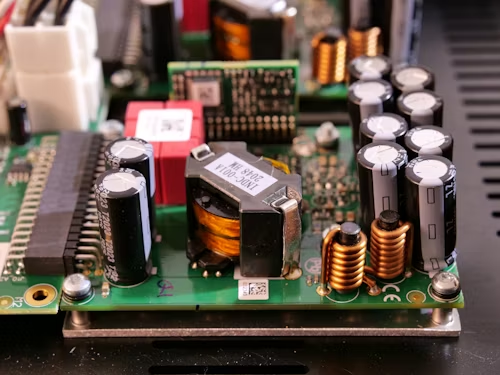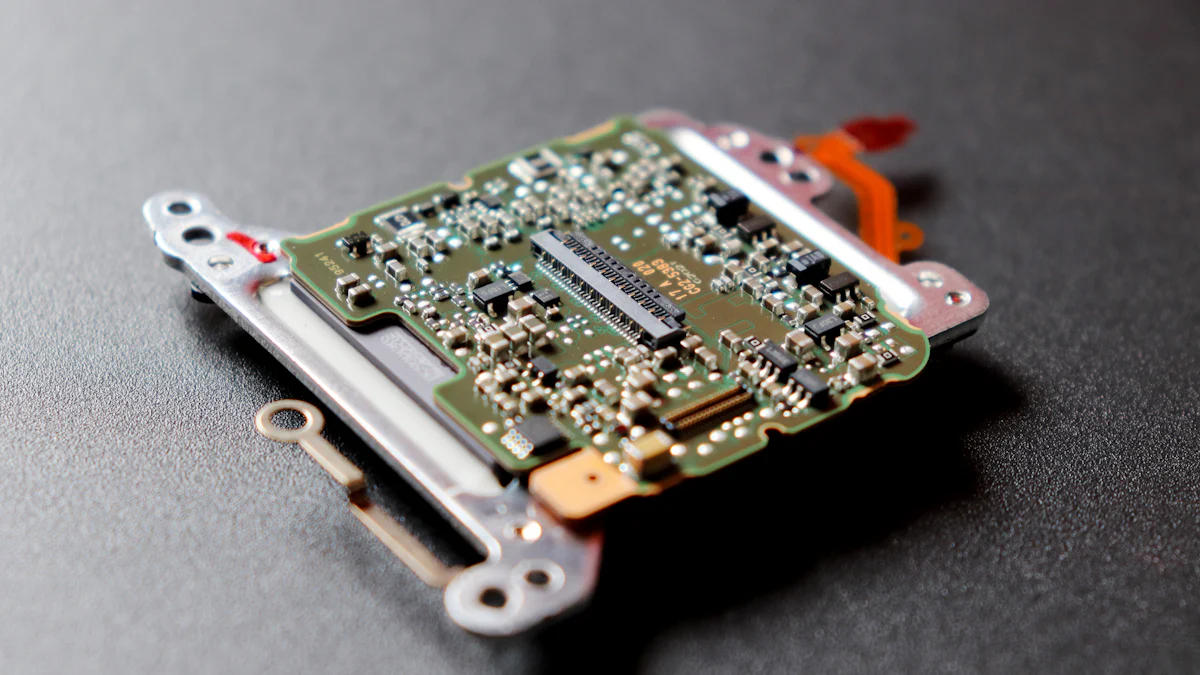Analysis and Practice of the AD620AN Instrumentation Amplifier in TV Power Applications

As an engineer with years of experience in the field of electronic design, I deeply understand that selecting components with exceptional performance and reliability is crucial for success in complex circuit designs. Today, I will take you on an in-depth exploration of a classic and widely popular instrumentation amplifier – the AD620AN – and, by drawing on my practical experience in TV power applications, reveal its unique appeal and practical value.
AD620AN: Compact Size, Substantial Capabilities
The AD620AN is not a new product, but its outstanding performance and high cost-effectiveness make it stand out among numerous analog devices. Its characteristics of high precision, low power consumption, and ease of integration make it an ideal choice for TV power systems. This amplifier requires only a single external resistor to set the gain, significantly simplifying design complexity and offering a wide gain adjustment range, enabling it to flexibly adapt to various TV power requirements.
Core Technical Highlights:
Wide Supply Range: The AD620AN supports a wide supply voltage range from ±2.3V to ±18V. This means it can easily adapt to various TV power architectures, finding suitable application scenarios from portable devices to large household televisions.
Ultra-Low Power Consumption: The maximum supply current is only 1.3 mA, which is crucial for modern TV systems pursuing energy efficiency. Low power consumption not only helps extend battery life (for portable TVs) but also effectively reduces system heat generation, enhancing overall reliability.
Excellent Noise Performance: In TV applications, signal purity directly impacts the audiovisual experience. The AD620AN's excellent low-noise performance ensures a high signal-to-noise ratio, providing clear and precise amplification of audio and video signals for the TV, significantly improving picture and sound quality.
Why Choose the AD620AN? Sharing My Practical Experience
Throughout my career, I have participated in several TV power module design projects. I recall one specific challenge: how to achieve precise amplification of weak sensor signals while ensuring signal integrity, all while considering cost and space constraints. At the time, there was no shortage of powerful instrumentation amplifiers on the market, but they were often expensive or bulky. After repeated comparisons and tests, we ultimately selected the AD620AN.
Case Study: Smart TV Ambient Light Sensor Interface
In smart TVs, ambient light sensors are used to automatically adjust screen brightness, providing the optimal viewing experience and saving energy. The output signal from these sensors is typically very weak and susceptible to power supply noise. We used the AD620AN to build a high-precision, low-noise signal conditioning circuit. Its low input bias current and high Common-Mode Rejection Ratio (CMRR) effectively suppressed common-mode noise, ensuring the accuracy of the sensor signal. By adjusting the external gain resistor, we could precisely match the required amplification factor according to the output characteristics of different sensors, thereby achieving smooth and precise adjustment of screen brightness.
Experience Summary:
Simplified Design: The AD620AN's single-resistor gain setting feature saved me a significant amount of complex calculations and component selection work during the initial design phase, greatly accelerating development progress.
Cost-Effectiveness: Compared to other high-performance instrumentation amplifiers, the AD620AN offers competitive pricing while guaranteeing performance, which is crucial for controlling BOM cost.
Reliability: During long-term operation tests, the AD620AN demonstrated high stability, maintaining excellent performance even in complex electromagnetic environments, providing a guarantee for the long-term reliability of the TV product.
Deep Integration: Incorporating the AD620AN into TV Power Circuits

Successfully integrating the AD620AN is not simply about placing it on the board; it requires a deep understanding of the entire system.
Key Component List:
AD620AN Instrumentation Amplifier: The core of signal amplification.
Gain Resistor (Rg): Key to setting the gain precisely. Based on the formula $G = 1 + \frac{49.4k\Omega}{R_g}$, we can calculate the required resistor value. For example, for a gain of 100, $R_g \approx 49.4k\Omega / 99 \approx 500\Omega$.
Decoupling Capacitors: Place 0.1µF and 10µF ceramic capacitors close to the AD620AN supply pins to filter high-frequency power supply noise and ensure supply purity.
Power Supply: A stable ±2.3V to ±18V dual supply or single supply (with a virtual ground) is essential for its proper operation.
Input Protection Resistors and Diodes: Series small resistors (e.g., 100Ω) at the inputs and parallel Schottky diodes can effectively prevent damage to the chip from input overvoltage or electrostatic discharge (ESD).
Integration Steps and Considerations:
Layout Planning: During PCB layout, be sure to place the AD620AN close to the sensor signal source, and ensure the input signal traces are as short as possible and far from noise sources. Power traces should be thick and short; ground should use a star ground or large-area copper pour to reduce ground loop noise.
Gain Setting: Precisely calculate and select the appropriate gain resistor Rg based on the actual application requirements. It is recommended to use high-precision, low-temperature-coefficient metal-film resistors to ensure gain stability.
Power Supply Decoupling: Strictly follow the datasheet recommendations and place high-quality decoupling capacitors at the AD620AN's supply pins. This is key to suppressing power supply noise and ensuring stable amplifier operation.
Input Signal Handling: For differential input signals, ensure input impedance matching and use shielded cables where possible to minimize external interference. For single-ended inputs, consider using a common-mode choke for additional noise suppression.
Output Buffering: Although the AD620AN has good output drive capability, when driving heavy loads or long transmission lines, it is still advisable to add a buffer to ensure signal integrity.
Common Pitfalls and How to Avoid Them:
Grounding Issues: Incorrect grounding is a primary source of noise in analog circuits. Be sure to separate digital and analog grounds and connect them at a single point, or use ferrite beads for isolation.
Poor Routing: Signal traces crossing power traces, unshielded long input runs can all introduce noise. Follow the principle of minimum loop area and use ground planes for shielding.
Thermal Effects: Even though the AD620AN has low power consumption, in high-density integration environments, the impact of local temperature rise on precision must be considered. Proper thermal design and component layout are crucial.
Performance Testing and Optimization: Ensuring Flawless Operation
After completing hardware integration, rigorous testing and verification are indispensable steps. This not only helps uncover potential issues but also optimizes system performance.
Initial Power-Up and Stability Test: Use an oscilloscope to monitor the stability of the power rails, ensuring no significant glitches or oscillations. Also, check that the AD620AN's static operating points are as expected.
Signal Integrity Testing: Input a standard signal with known amplitude and frequency, and measure the gain, linearity, distortion, and phase response of the output signal. Pay special attention to the amplification effect and noise level with small input signals.
Noise Evaluation: Measure the output noise voltage with no input signal applied. Using a spectrum analyzer, identify the sources of noise (e.g., 50/60 Hz mains interference, high-frequency switching noise) and implement targeted suppression.
Temperature Drift Test: Test the amplifier's performance at different ambient temperatures to evaluate its temperature stability. Temperature drift is a factor that cannot be ignored in high-precision applications.
Long-Term Reliability Test: Allow the circuit to operate for an extended period under conditions simulating the actual working environment, monitoring changes in key parameters to ensure stable performance throughout its lifecycle.
Optimization Strategies:
Calibration: For applications requiring extremely high precision, a digital calibration mechanism can be introduced to correct the amplifier's gain error and offset voltage via software.
Feedback Optimization: Adjust component values in the feedback network to optimize frequency response and stability.
EMC/EMI: For noise issues, try adding shielding, improving grounding, using common-mode chokes, or filter capacitors to enhance the system's electromagnetic compatibility.
Conclusion
The AD620AN instrumentation amplifier, with its exceptional performance, ease of use, and cost-effectiveness, demonstrates strong viability in TV power applications. From initial signal conditioning to final performance optimization, it is a trustworthy partner for engineers. By deeply understanding its operating principles and combining them with practical experience and techniques, we can not only design more efficient and stable TV power systems but also deliver an unprecedented audiovisual experience to users. I hope these insights will inspire your next design.
See Also
Sustaining High Quality Electronics with Advancing Technological Growth
CALL US DIRECTLY
(+86)755-82724686
RM2508,BlockA,JiaheHuaqiangBuilding,ShenNanMiddleRd,Futian District,Shenzhen,518031,CN
www.keepboomingtech.com sales@keepboomingtech.com
